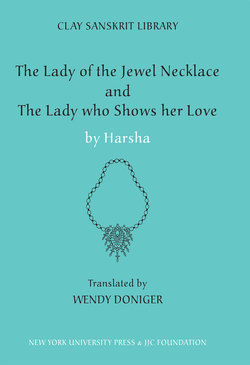Читать книгу The Lady of the Jewel Necklace & The Lady who Shows her Love - Harsha - Страница 39
На сайте Литреса книга снята с продажи.
Оглавлениеhe actually makes love to Vasava·datta when she is undisguised, thinking she is someone else pretending to be her. He calls her by the wrong name, “Sagarika,” a fatal (and, in Sanskrit literature, conventional) error. The king cannot tell his women apart, but from time to time he drops remarks that indicate his deeper knowledge that, in various ways, Ratnavali-as-Sagarika is replacing his wife.
This idea of the king’s self-imitation is taken into new realms of performance in ‘The Lady who Shows her Love,’ through the play within the play, a genre that the Sanskrit tradition nicely calls an “embryo play” (garbha/nataka), a play for which the outer play serves as a womb. For the king, the play within the play is not only a double impersonation but a double change of gender, a double-cross dress, a double drag that cancels itself out: the king pretends to be a woman pretending to be him. The complexities are multiplied when the play is produced by one of those Indian traditions—alluded to in this very play—in which women play the parts of men: at such a moment, one could imagine a woman playing the part of the king playing the part of a woman playing the part of the king.
What did the queen hope to accomplish by having her rival impersonate her? (She stages the play after the king has fallen in love with Aranyika.) Did she think the king would transfer back to her the love he had apparently transferred from her to the new woman? Did she hope to rekindle his love, fanning an old flame, as it were? How bitter must her humiliation have been when she realized her ruse had backfired in such a way that she herself had made it possible for the king to make love to her rival, right before her eyes. ________
